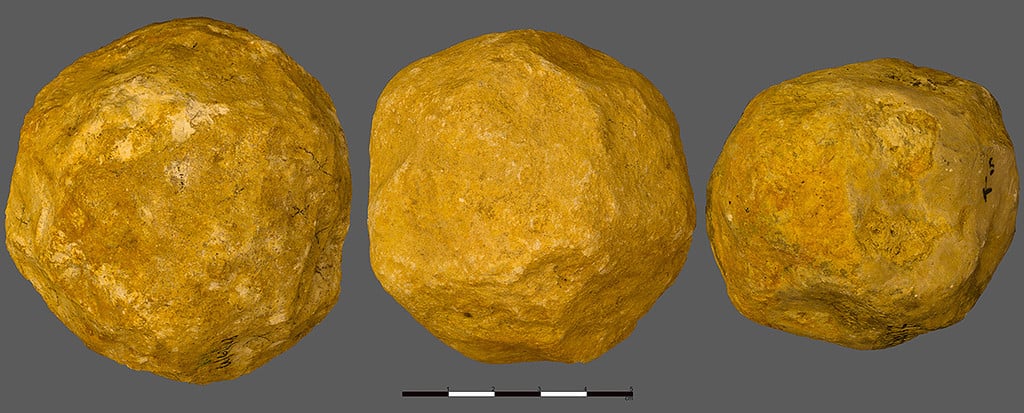Limestone spheroids are one of the least understood items from our human ancestors’ ancient past. They have perplexed researchers for years. In fact, some researchers even believe that they could have been made by accident or unintentionally. Now, a new study has found these objects were likely created on purpose by early humans millions of years ago — but we still don’t know what their purpose was.

A team from the Hebrew University of Jerusalem, in collaboration with researchers from Tel Hai College and Rovira i Virgili University examined 150 spheroids dating back from 1.4 million years ago. They were found at the Ubeidiya archaeological site north of modern-day Israel. The site is the oldest evidence of the Acheulean outside of Africa.
“Such a large sample of spheroids is rare in the Lower Palaeolithic. At other Pleistocene sites in the Levant, stone balls (items typically called polyhedrons, sub-spheroids, spheroids and bolas) tend to occur only sporadically and in small numbers, if at all,” the researchers wrote. No more than 12 have been found together before, they added.
In their study, the researchers applied 3D analysis methods, including spherical harmonics and surface curvature, to the collection of 150 limestone spheroids. They meticulously reconstructed the spheroid reduction sequence based on the trends observed in the scar facets and geometry, unveiling a remarkable pattern.
The spheroids at Ubeidiya were crafted with a premeditated reduction strategy, the team concluded, contrary to the notion that they were accidental by-products. They didn’t become smoother during their manufacture. Rather, they became spherical. Doing this required exceptional knapping skills and a preconceived goal, they said.
“Spheroids represent intentionally knapped items. A clear pattern in scar attributes was observed, whereby a primary surface was used as a platform to remove further scars. This primary surface became smaller and higher angled as reduction proceeded,” the researchers wrote. This has evolutionary and cognitive implications, they added.
Skillful early hominins
The discovery challenges the existing beliefs about the capabilities of early hominins and how they relate to technology. The intentional production of sphere-like objects suggests that they had a desire for and achieved deliberate geometry and symmetry in stone. This could represent the oldest evidence of hominins achieving this target.
But exactly why they crafted the spheres remains a big mystery. Some have previously suggested that hominins were likely trying to make tools that could extract marrow from bones or grind up plants. The spheroids could have also been used as projectiles or may have had an artistic or symbolic purpose, as Science Alert explains. The question remains open.
“Our results suggest that the spheroids of Ubeidiya are a complex formal technology that represents a manifestation of the complex cognitive and skilful capacities of Early Acheulean hominins,” the researchers wrote.
The study was published in the journal Royal Society Open Science.


